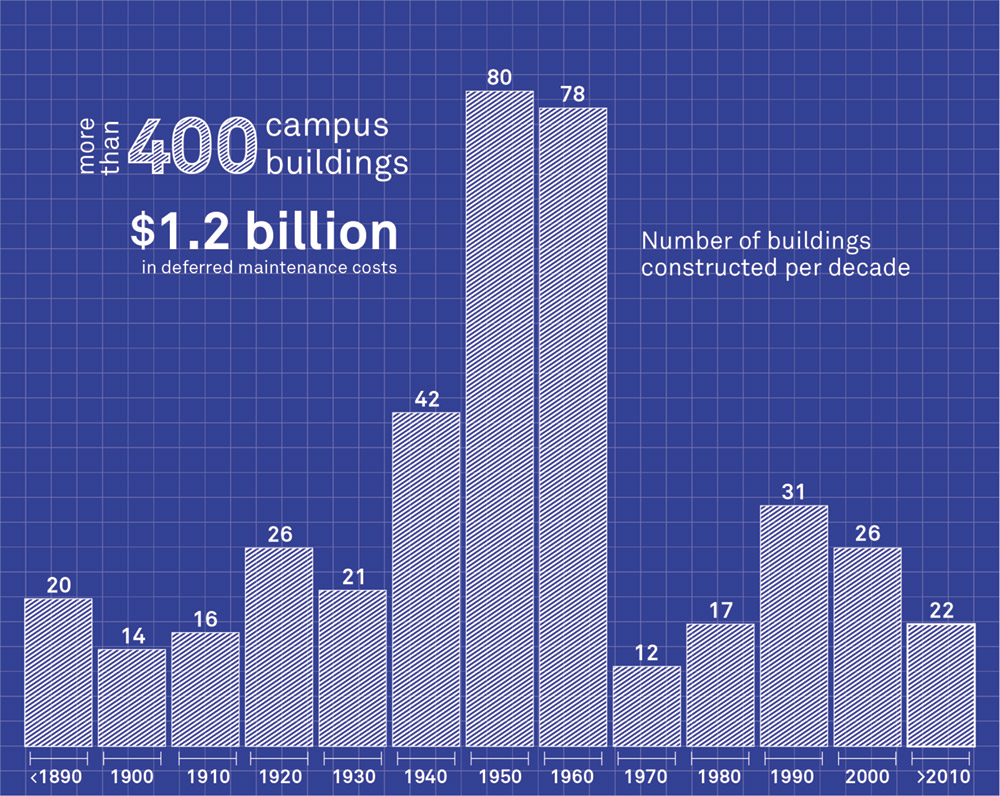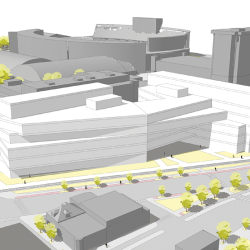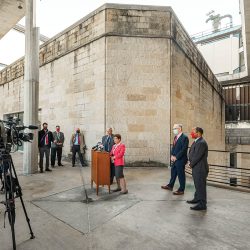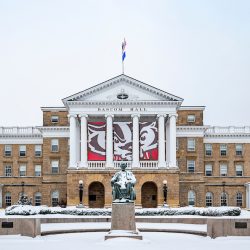A Long To-Do List
After World War II, American universities experienced a building boom to handle the flood of incoming students. At UW–Madison, more than 40 percent of campus buildings were constructed in the 1950s, ’60s, or ’70s.
But volume meant speedy construction, producing structures that haven’t stood the test of time and now need attention.
That’s what William Elvey had to worry about — a lot — as UW–Madison’s associate vice chancellor for Facilities Planning and Management. He likens the university’s backlog of deferred maintenance to what happens when a snowball rolls down a hill: it gets bigger. “It keeps me awake at night,” he said before leaving the UW to work for Children’s Health System of Texas.
The UW’s current deferred maintenance costs are estimated at $1.2 billion and continue to grow. Unlike previous state budgets, the most recent budget didn’t provide $20 million a year in borrowing to cover the costs of capital projects that typically cost more than $50,000, such as replacing roofs, and less expensive maintenance work, such as roof patching.
“[The Humanities Building] is the poster child for deferred maintenance,” Elvey says. The concrete exterior of the 1960s-era building is in poor condition and has exposed rebar. Elvey says it reminds him of the Tom Hanks movie The Money Pit, about an unending home renovation project.
Over the summer, university officials elected to transfer nearly $2 million from academic and research funds to cover repairs to the exterior and roof of the Humanities Building and 23 other projects that were critical to safety, including fire escapes.
For the next two-year budget, UW System officials have requested $100 million to restore the money campuses received in the past for repair and maintenance projects.
Published in the Winter 2016 issue




Comments
No comments posted yet.